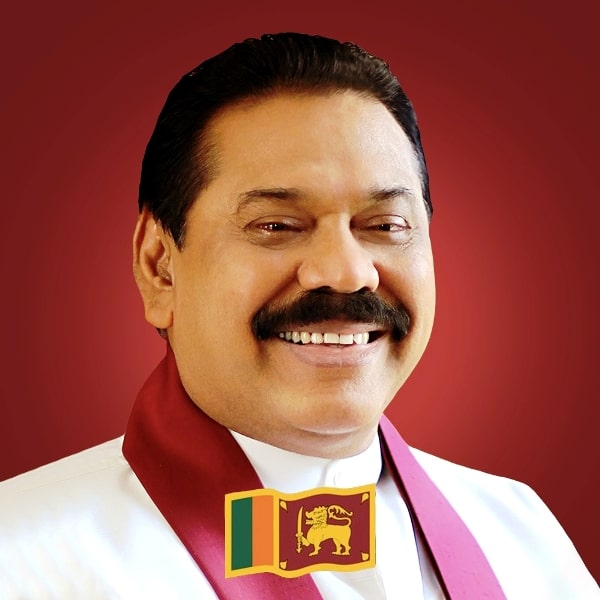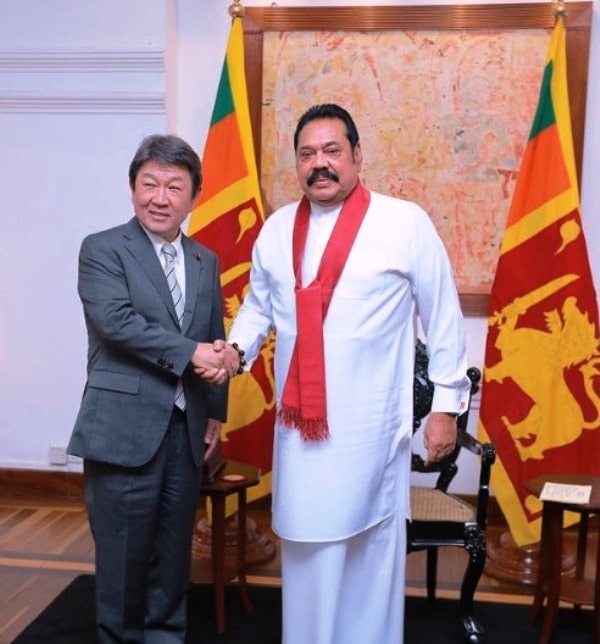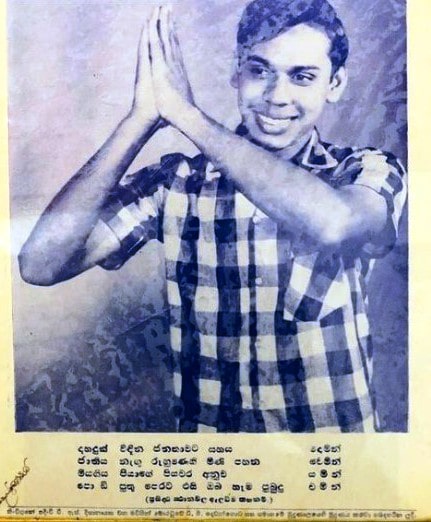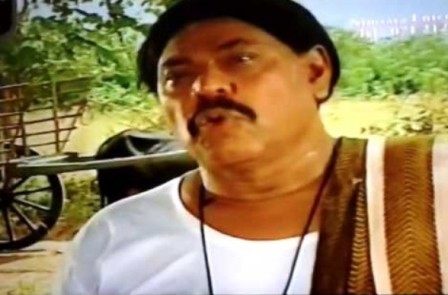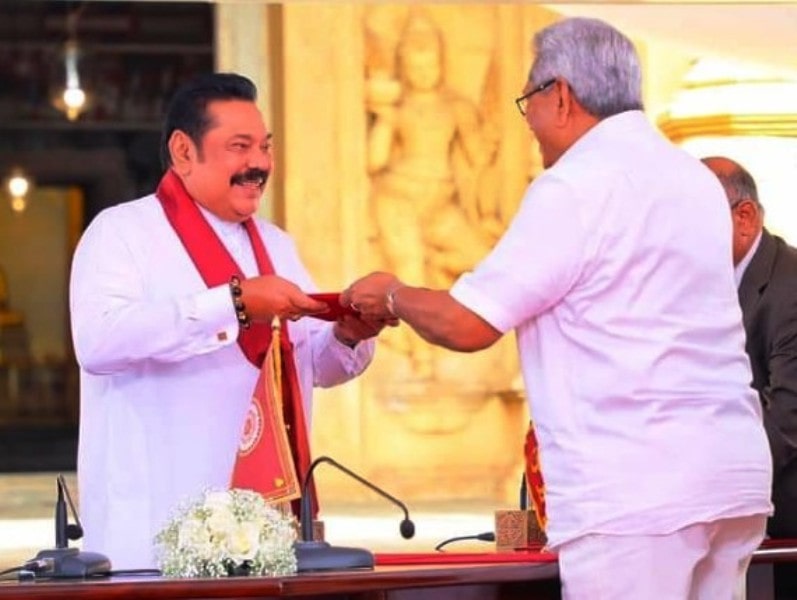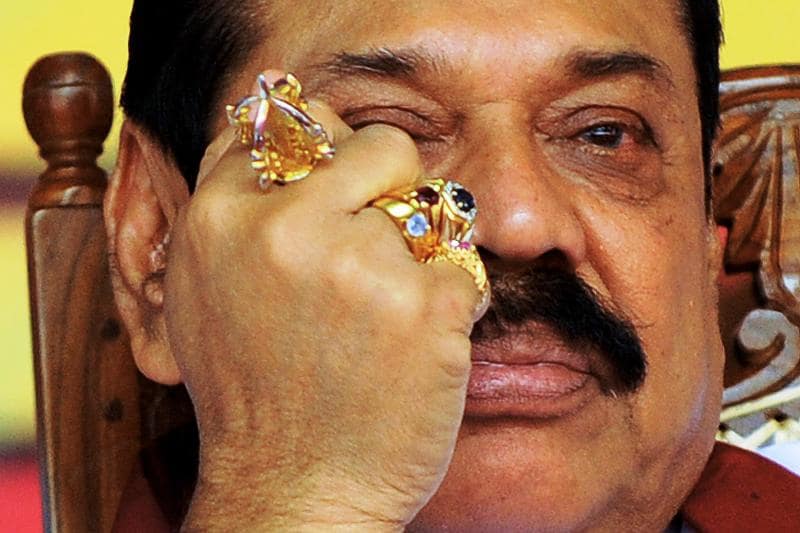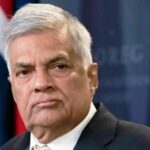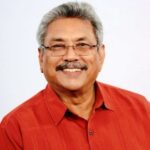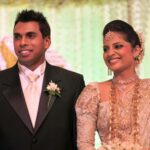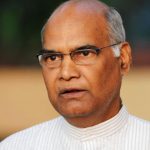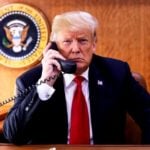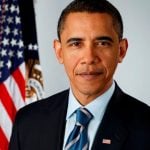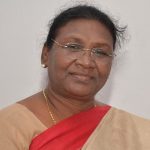Mahinda Rajapaksa Age, Wife, Children, Family, Biography & More
| Bio/Wiki | |
|---|---|
| Full name | Percy Mahinda Rajapaksa [1]The Wire |
| Nickname(s) | • Lord of the Rings [2]CNN-News 18 • Mynah [3]EconomyNext |
| Profession(s) | Politician and Lawyer |
| Famous for | • Being the President of Sri Lanka from 2005 to 2015 • Being the elder brother of Gotabaya Rajapaksa |
| Physical Stats & More | |
| Height (approx.) | in centimeters- 175 cm in meters- 1.75 m in feet & inches- 5’ 9” |
| Eye Colour | Dark Brown |
| Hair Colour | Salt and Pepper |
| Politics | |
| Political Party | • Sri Lanka Freedom Party (SLFP) (1967-2016)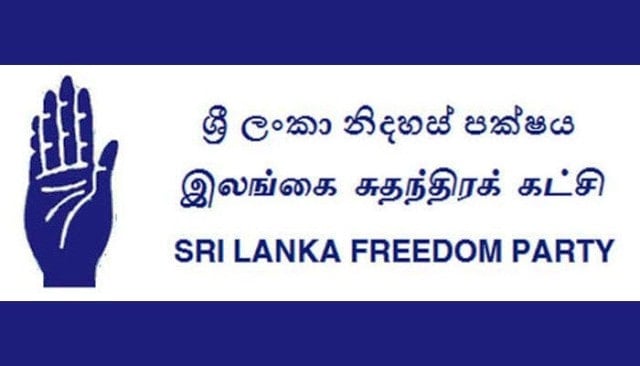 • Sri Lanka Podujana Peramuna (SLPP) (2016-present) 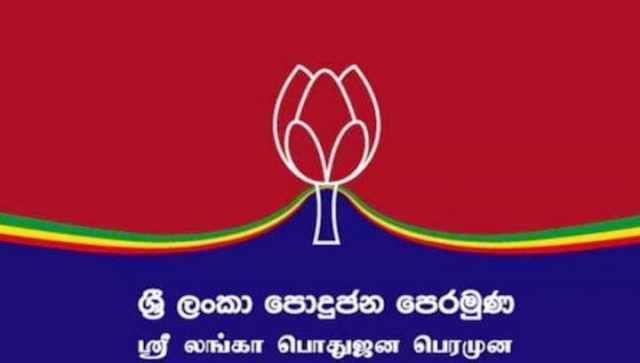 |
| Political Journey | • Ceylon Mercantile Union's branch secretary (1967) • Became a member of the parliament for the first time (1970-1977) • Member of Parliament (1989-1994) • Minister of Labour (1994-1997) • Minister of Fisheries and Aquatic Resources (1997-2001) • Member of Parliament (2001-2004) • 13th Prime Minister of Sri Lanka (2004) • Additional charge of the Ministry of Highways, Ports & Shipping (2004-2005) • Became the President of Sri Lanka for the first time (2005-2010) • Became the President of Sri Lanka for the second time (2010-2015) • Member of Parliament (2015-2020) • Chairman of SLPP (2016-present) • Prime Minister of Sri Lanka (2020-2022) |
| Awards, Honours, Achievements | • Nalanda Keerthi Sri by the Nalanda College in 2004 • Honorary doctorate in law by the University of Colombo on 6 September 2009 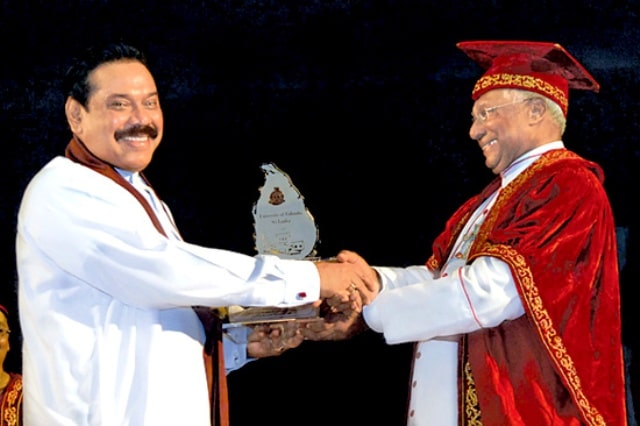 • Honorary doctorate for contributing to world peace and outstanding success in defeating terrorism by the Peoples’ Friendship University of Russia on 6 February 2010 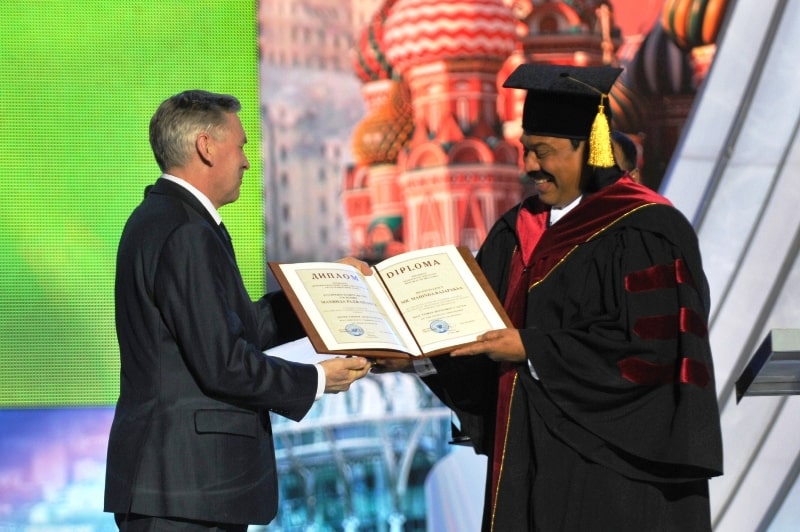 • Honorary doctorate by the Beijing Language and Culture University (BLCU) in August 2011 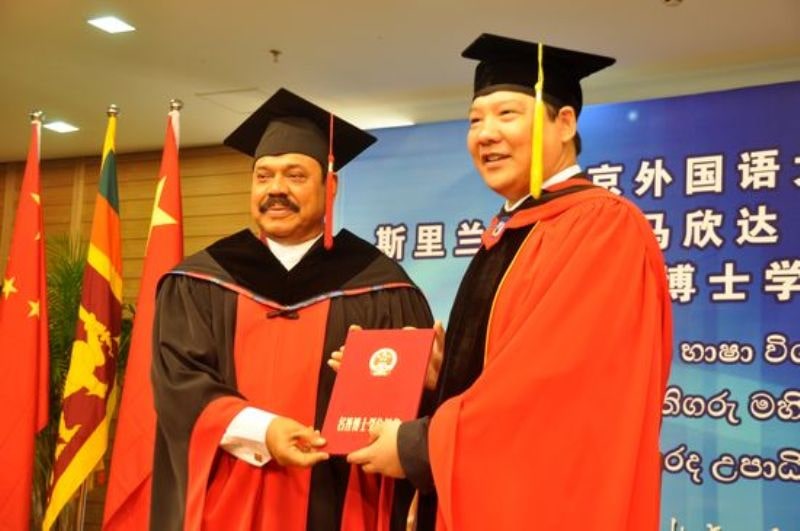 • Order of the Star of Palestine medal by the Palestinian government in 2014 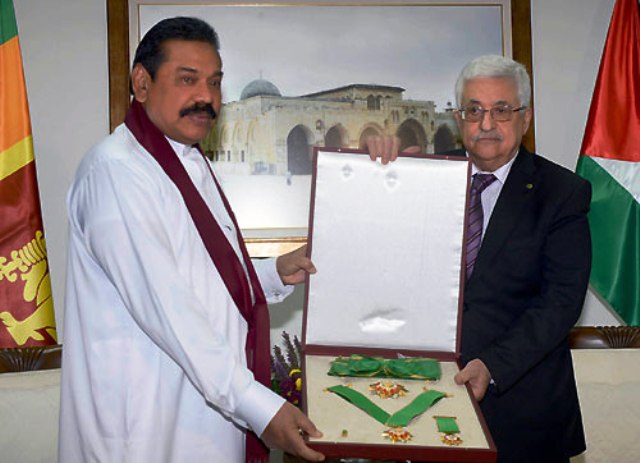 • Professor Emeritus by the Visva Bharati University in January 2022 |
| Personal Life | |
| Date of Birth | 18 November 1945 (Sunday) |
| Age (as of 2022) | 77 Years |
| Birthplace | Weeraketiya, Southern Province, British Ceylon (now Sri Lanka) |
| Zodiac sign | Scorpio |
| Signature | 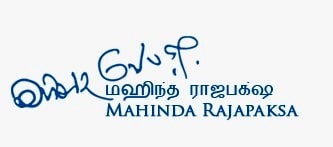 |
| Nationality | • Ceylonese (1945-1948) • Sri Lankan (1948-present) |
| Hometown | Palatuwa, Matara, Sri Lanka |
| School | • Richmond School • Nalanda College • Thurstan College |
| College/University | Colombo Law College (now known as Sri Lanka Law College) |
| Educational Qualification | LLB [4]Mahinda Rajapaksa’s official website |
| Religion | Buddhism [5]ThePrint |
| Ethnicity | Sinhalese [6]Mahinda Rajapaksa’s official website |
| Address | House No. 117, Wijerama Road, Colombo 07, Sri Lanka |
| Controversies | • Accused of rigging elections in Sri Lanka: After Mahinda Rajapaksa won the 2005 Presidential elections, his political rival, Ranil Wickremesinghe, accused Mahinda of paying large sums of money to the Liberation Tigers of Tamil Eelam (LTTE) to stop the Tamil population living in the LTTE dominated areas in Sri Lanka from casting their vote. The LTTE also threatened the Tamils of facing dire consequences should they violate their order. [7]BBC After Mahinda Rajapaksa won the 2010 Presidential elections, Amarsighe, a JVP politician, accused Mahinda of hacking and manipulating the election results. While giving an interview to a Sri Lankan media channel, in March 2010, Amarsinghe claimed that when he was having supper with Mahinda, Mahinda told him about using the computers to manipulate the results in his favour during the Presidential elections. Talking about it, he said, "It is not my statement. It is in fact Mahinda’s. I just repeated that if he was capable of doing such a computer jilmaart to top the district preference votes, he may have done something similar to that computer jilmaart to become the top in the country as well.” [8]Ada Derana After Mahinda lost the 2015 Presidential elections, the American newspaper named The New York Times published an article in 2018 titled How China Got Sri Lanka to Cough Up a Port in which it claimed that China Harbour Engineering Company, a Chinese port constructing company, paid $7.6 million to Mahinda Rajapaksa for his 2015 Presidential elections campaigning. The report also claimed that Yi Xianliang, who, in 2015, was serving as the Chinese ambassador to Sri Lanka, tried to influence the elections in Mahinda's favour to further China's ambitions in Sri Lanka. According to The New York Times report, out of the $7.6 million, Mahinda bought merchandise and printed t-shirts for his election campaigning, which cost him $6,78,000. He also purchased gifts worth $2,97,000 for his supporters. According to the article, $38,000 was paid by Mahinda to the Buddhist monks who supported his Presidential bid. Reportedly, he distributed cash worth $1.7 million among the Sri Lanka Freedom Party's volunteers. [9]The New York Times Talking about The New York Times article, Mahinda, during an interview, said that the article was an attempt of the United National Party (UNP) to malign his image. He said, "If any election campaign contributions had been made to me by China Harbour Co, the Port City contract would not have been restored to them and neither would they have been allowed to bid for the lease of the Hambantota harbour. The NYT writer has stated that they had obtained some of the details in that article from a Sri Lankan government investigation. Every Sri Lankan knows that the main preoccupation of this government since it came into power has been to sling mud at the opposition.” [10]Colombo Telegraph In 2018, the Colombo International Container Terminals Limited (CICT), a joint venture between Sri Lanka and China, contradicted Mahinda's claims and said that the CICT deposited Rs 20 million into his sister-in-law's bank account. [11]Business Standard • Alleged plotting of a journalist's kidnapping: In 2018, the Sri Lankan Criminal Investigations Department (CID) reportedly visited Mahinda Rajapaksa's residence and questioned him about Keith Noyahr, a Sri Lankan journalist, who was kidnapped in 2008. According to the CID, Mahinda received several calls from two suspects of the kidnapping, Karu Jayasuriya and Lalith Alahakoon, a few hours before Keith was released; however, Mahinda denied the allegations and claimed that he never received any calls from the suspects. [12]Daily Mirror Giving the details about his kidnapping, Keith, in the Supreme Court, said, "While serving as Deputy Editor of The Nation in 2008, I had published a series of articles flagging weaknesses in the government and military. A day after these articles were published, while I was travelling towards the University of Colombo, I noticed that I was being followed by Army jeeps and had to escape them by entering the university premises. On the same night, an armed group who arrived in a white van had beaten, blindfolded and abducted me. I was beaten throughout the journey in the van and was questioned on whether I had any links with the LTTE. After which I was taken to an unknown location, stripped, suspended mid-air and beaten once again.” [13]Newsfirst.lk • Accusations of violating human rights during the war against LTTE: According to WikiLeaks, in 2010, Patricia A. Butenis, the then US ambassador to Sri Lanka, exchanged some messages with the Pentagon in the United States in which she alleged that the massacre of the Tamil population, a minority in Sri Lanka, was massacred by the government troops on the orders of the Mahinda-led administration. She also claimed that after the war with LTTE was over in 2009, many surrendered LTTE rebels were shot and killed by the authorities on the directions of Mahinda. Talking about the messages, during an interview, she said, "There are no examples we know of a regime undertaking wholesale investigations of its own troops or senior officials for war crimes while that regime or government remained in power. In Sri Lanka this is further complicated by the fact that responsibility for many of the alleged crimes rests with the country’s senior civilian and military leadership, including President (Rajapaksa) and his brothers and opposition candidate General Fonseka.” [14]The Telegraph In 2009, after the allegations of rampant human rights violations in Sri Lanka, Ban Ki-moon, the then Secretary-General of the United Nations (UN) established a task force to conduct independent and thorough investigations into the allegations. In 2011, the task force submitted its report to the United Nations Human Rights Council (UNHRC) and claimed that during the civil war in Sri Lanka, the Sri Lankan military actively targeted and bombed the places where civilians resided. The report also claimed that the civilians, who were stuck in the war zones and could not make it to government-designated safe zones, were denied any type of help or assistance from the government. As per the report, during the Sri Lankan civil war, more than 40,000 civilians were killed and many were wounded. Reportedly, when the UNHRC questioned the Mahinda-led administration about the human rights violations in Sri Lanka, the Sri Lankan government came up with its version of the report to counter the claims of the UNHRC. [15]ReliefWeb In 2011, a United Kingdom-based media channel named Channel 4 News wrote an article titled “The Sri Lankan soldiers whose hearts turned to stone.” Through their article, they accused the Sri Lankan Armed Forces of blatant violations of human rights in Sri Lanka during the war against LTTE. The media house even mentioned the claims made by a retired officer of the Sri Lankan Army who said that during the civil war, the Sri Lankan military conducted counter-insurgency operations in the country without having to answer the government and violated human rights. During an interview with Channel 4 News, the retired Sri Lankan Army officer said, "When I look at it as an outsider I think they’re simply brutal beasts. Their hearts are like that of animals, with no sense of humanity. If they wanted to rape a Tamil girl, they could just beat her and do it. If her parents tried to stop them, they could beat them or kill them. It was their empire. For the soldiers at the battlefront, their hearts had turned to stone. Having seen blood, killings and death for so long, they had lost their sense of humanity. I would say they had turned into vampires.” [16]Channel 4 News In its 2012 documentary titled Sri Lanka’s Killing Fields, Channel 4 News claimed that according to revelations made by the whistleblowers in Sri Lanka, after the civil war ended in 2009, the Sri Lankan authorities found the mortal remains of many LTTE female rebels, who were either tortured or sexually assaulted by government troops before killing them. [17]Channel 4 News The Sri Lankan government released a statement in which it denied playing any role in the violations of human rights in Sri Lanka. The government also said that the atrocities were committed by the LTTE rebels and not the Sri Lankan Armed Forces. • Allegations of siphoning funds and indulging in corrupt practices: According to several sources, Mahinda Rajapaksa has time and again been accused of accepting bribery and misusing funds. In 2012, according to a report published by the Transparency International Corruption Index (TICI), Mahinda embezzled funds worth Rs. 3,000,000,000 from a roadways project for a personal exhibition. In 2015, the state-owned Independent Television Network (ITN) also accused Mahinda of being the reason behind the ITN incurring massive losses after he refused to pay the media house for broadcasting his 2015 Presidential elections campaign commercials. In the same year, President Sirisena constituted a Presidential Commission of Inquiry (PCI) with four judges of the Sri Lankan High Court in it. The PCI was tasked with investigating the allegations levied by the ITN against Mahinda. In his defence, in 2015, Mahinda challenged the appointment of four judges of the High Court in the PCI at the Court of Appeals in Sri Lanka. Talking about it, Mahinda's lawyers said, "We have objected to the functioning of the commission and that it was unconstitutional to make this commission as four serving High Court judges could not be appointed to carry out other duties such as functioning as members of the commission.” The Court of Appeals, in its judgement, upheld the appointment of four High Court judges and stated that the President reserves the right to appoint judges of a court in the PCI. In its judgement, the court said, "Under the Article 110 of the Sri Lankan Constitution, the President can appoint High Court judges for other duties. There is no mention in the Constitution that High Court judges cannot be appointed to the commission.” [18]Daily FT On 13 January 2015, a complaint was lodged against Mahinda, Gotabaya, and Basil, over their alleged role in accepting bribery while signing deals with the Chinese. The complaint was lodged against the brothers by the Sri Lankan political party named Janatha Vimukthi Peramuna (JVP) at the Bribery and Corruption Commission (BCC). Talking about it, the spokesperson of JVP said, "The main objective of our complaint is to ensure that the Mr Rajapaksa family is brought to justice. We want to prevent them from fleeing the country and escaping justice. A total of 12 individuals have been named in the complaint as alleged offenders including former finance secretary Punchi Banda Jayasundera and ex-central bank governor Nivard Cabraal. They have been accused of foreign exchange fraud, land grabs and misusing state property.” [19]The Straits Times On 16 January 2015, after JVP's complaint, President Sirisena constituted an SIT to investigate the allegations levied on the Rajapaksa brothers and till the time the investigations were being conducted by the SIT, Sirisena suspended the deals signed between the Rajapaksa-led Sri Lankan government and the Chinese government. In February 2015, the then Prime Minister of Sri Lanka Ranil Wickremesinghe established the Financial Crimes Investigation Division (FCID), which was tasked to investigate the cases of corruption that took place during the reign of the Rajapaksa-led Sri Lankan government. A few months after the creation of the FCID, the former Minister of Economic Development and the younger brother of Mahinda Rajapaksa, Basil Rajapaksa, was arrested on the charges of playing a part in laundering $ 5,30,000. [20]BBC Talking about his arrest, during an interview, Basil said, "They have no evidence. They are making wild allegations. This is a witch hunt. Neither I nor any member of my family has ill-gotten money.” Several Sri Lankan media sources claimed that after the declaration of the results of the 2015 Sri Lankan Presidential elections, the Sri Lankan Air Force issued a notification in the gazette of Sri Lanka in which it claimed that Mahinda along with his family members and close associates used the helicopters operated by the airforce for their personal use. The airforce also claimed that Mahinda spent $17,300 (Rs. 2,278,000) of taxpayers' money to travel in the airforce's helicopters for his Presidential election campaigning. After Mahinda lost the 2015 Presidential elections, the UNP accused him of siphoning approximately $5.31 billion (Rs 700 billion) outside Sri Lanka with the help of the Central Bank of Sri Lanka (CBSL). On 8 January 2015, the UNP-led Sri Lankan government constituted a task force, which was tasked with tracing the money laundered by the Rajapaksa family during their rule over the country. Cabinet Secretary Rajitha Senarathne, during an interview, said "You all know about this black money and these hidden foreign assets. We are aware of these. We will provide all the information, whatever is available to us, to a special investigation unit. The government has information that some of the black money belongs to big people who were very powerful in the hierarchy of the previous government.” [21]Reuters • Allegations of attempting to retain power with the help of the military: After Mahinda Rajapaksa lost the 2015 Presidential elections in Sri Lanka, Athuraliye Rathana Thero, a former Sri Lankan member of parliament, accused Mahinda of attempting a coup in Sri Lanka with the help of the Sri Lankan military to retain his Presidency. Following Thero's allegations, two more MPs, Rajitha Senaratne and Mangala Samaraweera, accused Mahinda of visiting the then Sri Lankan Army chief Jagath Jayasuriya to persuade him to join Mahinda in the coup; however, according to Rajitha and Mangala, the army chief denied Mahinda's request and refused to be a part of the coup. The duo also claimed that not only did Mahinda attempt to influence Jagath Jayasuriya but also tried to gain the support of the former Attorney General of Sri Lanka and asked him to declare an emergency in Sri Lanka, which would make the coup easy. [22]Oneindia Tamil After the allegations of the coup, President Maithripala Sirisena established a task force to investigate the allegations following which the UNP-led Sri Lankan government also accused Mahinda of ordering his supporters to capture the polling booths in Sri Lanka during the 2015 Presidential elections. [23]BBC Talking about it, the spokesperson of the UNP, during an interview, said, "We have credible information that the Army Commander, Police Chief and Attorney General were called to the Temple Trees at 1.00 a.m. on Friday and checked with them a way to stop counting of votes immediately when the two knew that they were losing the election. Fortunately, the Army Commander and the IGP have told Mahinda and Gotabaya in no uncertain terms that they could not be a party to this illegal attempt and not ready to give unlawful orders to men under their command. Attorney General has said the illegal and unconstitutional action will have extremely dangerous repercussions. The modus operandi of the two brothers was to grab power through a military coup. The people of this country and the global community should know this.” [24]Daily Mirror In 2015, former Sri Lankan Army commander Sarath Fonseka also accused Mahinda of attempting a coup in Sri Lanka. He also claimed that Mahinda had managed to position approximately 2000 soldiers of the Sri Lankan Army on the outskirts of Colombo and was ready to launch a coup. In March 2015, the UNP-led Sri Lankan government's cabinet spokesperson denied having any evidence of the attempted coup by Mahinda. Later, Mahinda, in an official statement, denied attempting a coup. In his statement, Mahinda said, "I deny in all possible terms reports of attempts to use the military to influence election results. I have always bowed down to the people’s verdict. This government wants to throw mud at me. I mean how can you start a coup with every other government being within two hours to thwart any attempt by me? I think they were speaking to Western governments and they had this idea about me.” [25]Ada Derana [26]The Hindu • Accused of appointing his relatives to important government posts: The Sri Lankan media has often accused Mahinda Rajapaksa of promoting nepotism in Sri Lanka. After winning the 2005 Presidential elections, Mahinda made his younger brother Gotabaya Rajapaksa the permanent defence secretary of Sri Lanka and reportedly, Gotabaya became the defence secretary in 2005 without contesting the Sri Lankan general elections. After winning the Presidential elections consecutively, in 2010, Mahinda appointed his elder brother Chamal Rajapaksa as the minister of finance. According to several media sources, Mahinda, during his tenure as the President of Sri Lanka, has not only appointed his brothers to important posts in the government but has also appointed his other relatives to several important diplomatic and governmental posts. [27]Groundviews – Journalism for Citizens • Deteriorated freedom of the journalists under his Presidency: Several Sri Lankan media sources claimed that when Mahinda Rajapaksa served as the President of Sri Lanka from 2005 to 2015, the freedom of the journalists to report on sensitive issues deteriorated. According to a 2010 article published by Reporters Without Borders, out of 173 countries, Sri Lanka's freedom of the press was ranked at 158, next to Saudi Arabia; however, the report was rejected by some Sri Lankan media houses, which claimed that the report was biased and unjustified. Voicing its opinion against the Reporters Without Borders report, the Sunday Guardian published an article in 2011 in which it said that the placement of Sri Lanka next to Saudi Arabia in the report was unjustified as there are no laws in Sri Lanka that debar the journalists from reporting sensitive issues like Saudi Arabia has. The report further said, "RSF’s 2010 Press Freedom Index has Sri Lanka at number 158, nearly tied with Saudi Arabia. This makes the rankings somewhat suspect. In Saudi Arabia, all newspapers are owned by the royal family or their associates. All TV and radio stations are government-owned. Saudi journalists are forbidden by law to criticise the royal family or religious authorities and writers and bloggers are routinely arrested. Sri Lanka is obviously not this bad.” • Sidelining the Tamils living in Sri Lanka: According to several sources, Mahinda, while serving as the President of Sri Lanka, implemented several policies that led to the marginalization of the Tamils living in Sri Lanka. In 2014, Mahinda and his younger brother Gotabaya were accused by the Tamil National Alliance (TNA) of supporting the Bodu Bala Sena, a Buddhist extremist faction operating in Sri Lanka. The TNA also accused the brothers of using the Bodu Bala Sena to attack the Tamils and Muslims living in Sri Lanka. [28]Reuters Talking about the allegations, the spokesperson of the TNA, during an interview, said, "The values of democracy, good governance, and rule of law have suffered unprecedented assault under Rajapaksa. Instead of pursuing reconciliation, the Rajapaksa regime has permitted extremist groups to carry out attacks against minority peoples and their places of religious worship.” In 2014, Mahinda Rajapaksa denied the allegations against him and said that the BBS was created by the western powers to malign the image of the Rajapaksa family. Talking to the media about it, he said, "It is a Western-backed conspiracy to alienate minority Muslims and defeat his government. Look at where the BBS travelled (Norway and the US). It is clearly a (then) opposition project. I am a president for the whole nation. I divide people not as Sinhalese or Tamils or Muslims or Burghers [Lankan-Europeans]. I divide them into people who love the country and people who do not.” [29]Tamil Eelam Liberation Organization Mahinda Rajapaksa, as the President, implemented a law in Sri Lanka according to which the national anthem of Sri Lanka would be sung by the citizens in the Sinhalese language and not in Tamil; however, after Mahinda was defeated by Maithripala Sirisena in the 2015 Presidential elections, Sirisena withdrew the law after which Mahinda voiced his opinion against the withdrawal of the law and said that "the national anthem should be sung in one language and not two or three languages." [30]Colombo Gazette • Accused of creating the "Rajapaksa cult" in Sri Lanka: According to the Sri Lankan media, Mahinda, as a President, wanted to create a cult image of himself in Sri Lanka. Reportedly, young school children used to sing songs in his praise in which they used to refer to him as “the father of the country” and “our father.” The media also claimed that his supporters referred to him as the "King." As the President, Mahinda not only had a few airlines named after him but also asked the Central Bank of Sri Lanka (CBSL) to print his photo on the currency notes. As the President, he had several infrastructural projects named after him. These projects included the naming of Mattala Rajapaksa International Airport, Magampura Mahinda Rajapaksa Port, Nelum Pokuna Mahinda Rajapaksa Theatre, and Mahinda Rajapaksa International Stadium after him. [31]Colombo Telegraph [32]Hindustan Times • "The medical degree" row: In 2017, Mahinda Rajapaksa supported the agitation led by the students who were pursuing a degree in medicine from state-owned colleges and institutes against the degree in medicine that was being given by privately owned institutes and colleges like the South Asian Institute of Technology and Medicine (SAITM). While talking about the protests, Mahinda Rajapaksa said that the Sri Lankan government should introduce a standard policy regarding the admission procedure of MBBS aspirants in Sri Lanka or else everyone in Sri Lanka would become a doctor by receiving a degree through institutes like SAITM. Responding to Mahinda's statement, the director of SAITM claimed that the institute was given recognition by the University Grant Commission during Mahinda's Presidency. He also claimed that on the orders of Mahinda, the institute awarded scholarships worth Rs 7 million to those students who had scored good marks in biology but could not pursue a degree in medicine at a government-owned institute. [33]Newsfirst.lk [34]Ada Derana • Violently attacking the protestors during the 2022 crisis: In May 2022, Mahinda Rajapaksa was accused of using brute force against the peaceful protestors who were protesting against the Rajapaksa family. It was alleged that after resigning from the Prime Ministership, on 9 May 2022, he gave a speech to his supporters in the Sri Lanka Podujana Peramuna (SLPP) in which he instigated them to violently crackdown on the protestors against the Rajapaksa family. Reportedly, after the speech, his supporters, armed with clubs and sticks, brutally attacked the protestors chanting "Gota Go Home" outside Mahinda's residence in Colombo. Several Sri Lankan media houses also claimed that Mahinda's supporters also attacked the protesters who were protesting at Galle Face and burnt their tents. Many sources claimed that the attacks undertaken by Mahinda's loyalists resulted in more than 200 citizens getting critically injured. In his tweet, Sanath Jayasuriya, a former Sri Lankan cricketer, alleged that the attacks on the peaceful protestors in Sri Lanka were planned by Mahinda and his brothers. Talking to the media about it, he said, "I never thought that this type of thuggery will be unleashed on innocent protesters at galle face in broad day and outside temple trees. The police must remember they are here to protect the PUBLIC of this country not corrupt politicians. This is the end of the Rajapaksas.” [35]Hindustan Times [36]The Guardian |
| Relationships & More | |
| Marital Status | Married |
| Marriage Date | Year, 1983 |
| Family | |
| Wife/Spouse | Shiranthi Rajapaksa (former Miss Sri Lanka, former first lady of Sri Lanka, psychologist)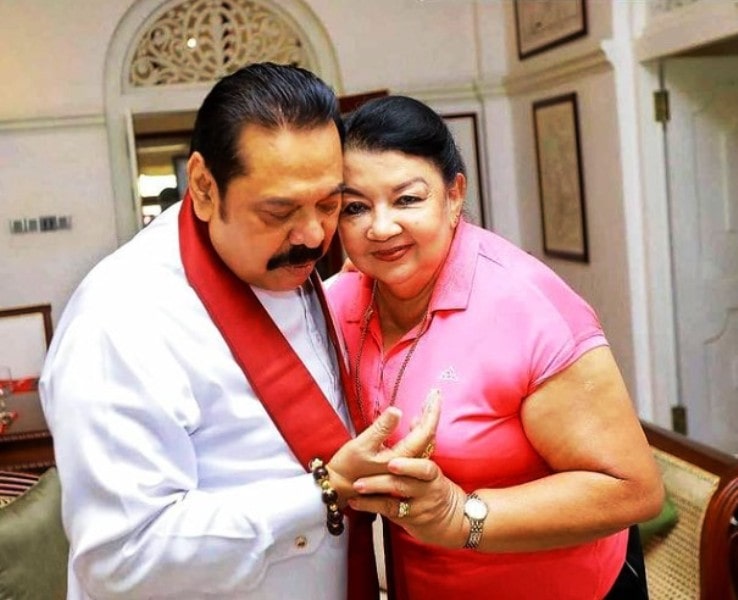 |
| Children | Son(s)- 3 • Lakshman Namal Rajapaksa (politician, eldest) 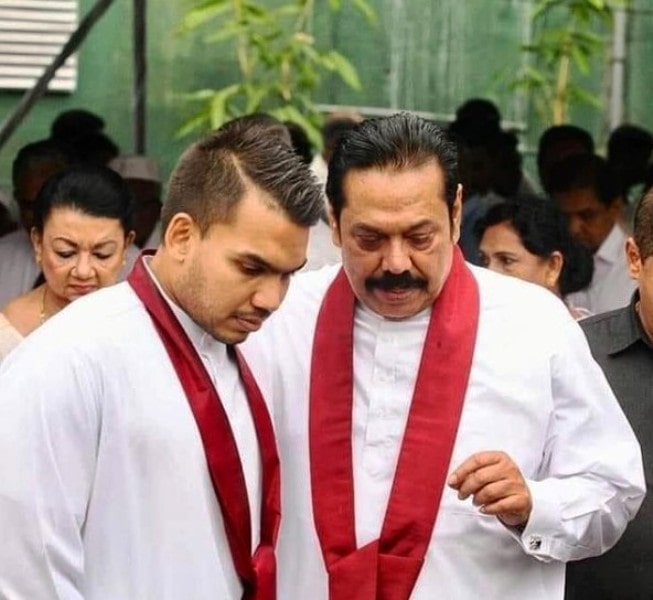 • Yoshitha Kanishka Rajapaksa (Sri Lankan Naval officer) 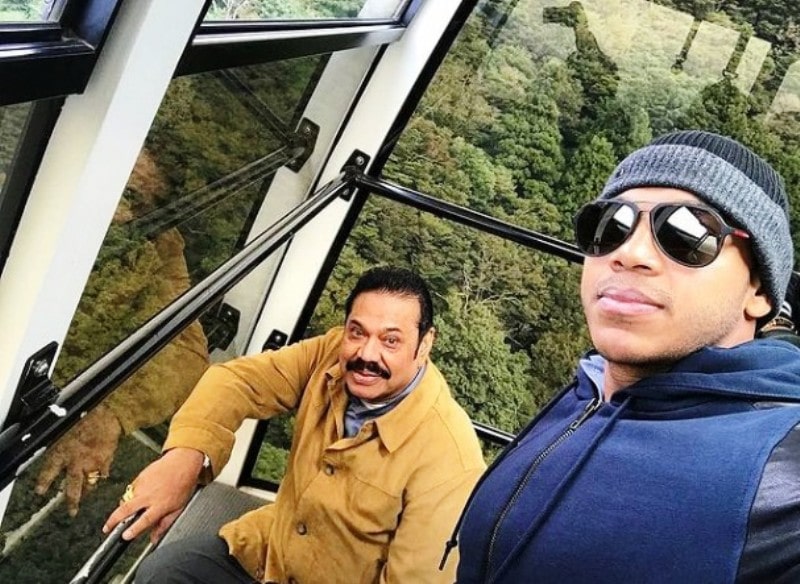 • Chandana Rohitha Rajapaksa (athlete, musician, youngest) 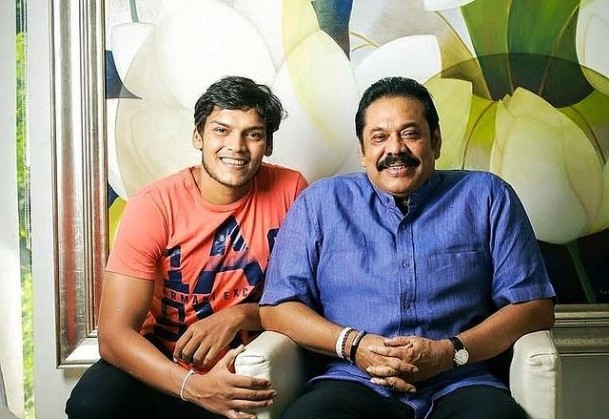 |
| Parents | Father- DA Rajapaksa (politician, freedom fighter)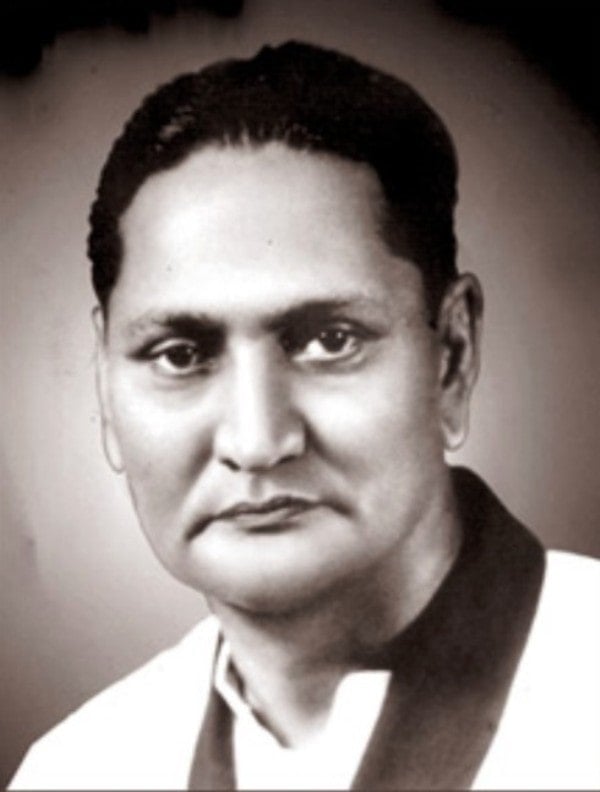 Mother- Dandina Rajapaksa 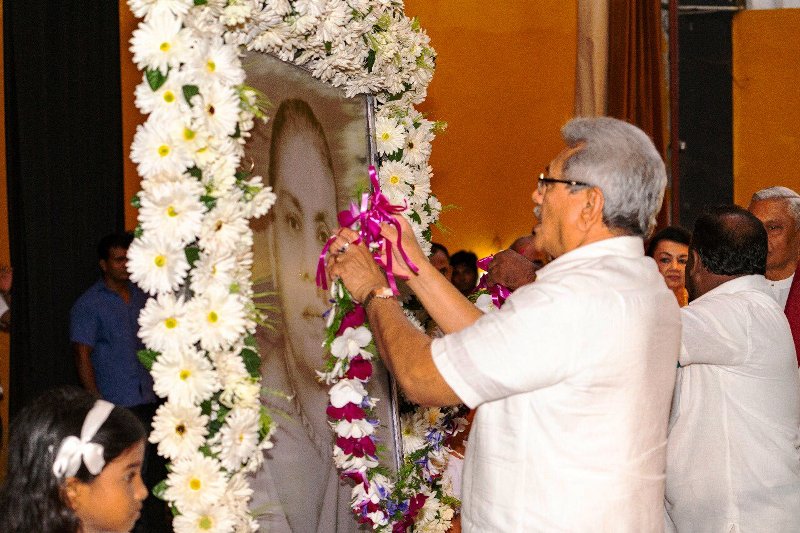 |
| Siblings | Brother(s)- 5 • Chamal Rajapaksa (former speaker of the Sri Lankan parliament, lawyer) 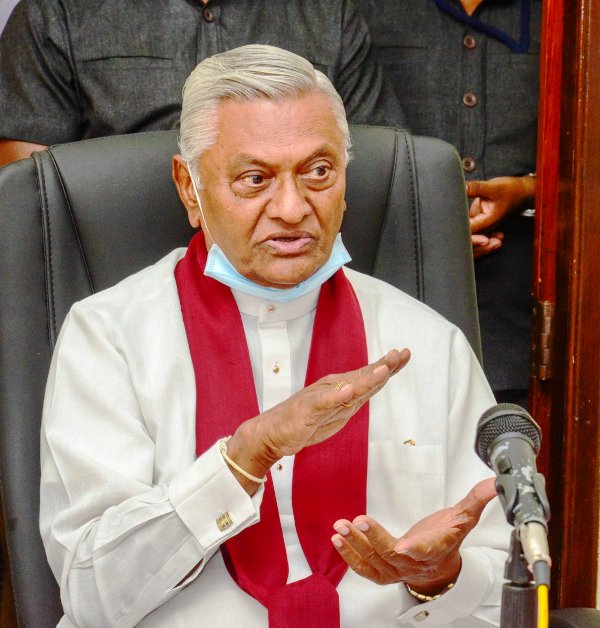 • Gotabaya Rajapaksa (former President of Sri Lanka, retired Sri Lankan Army officer) 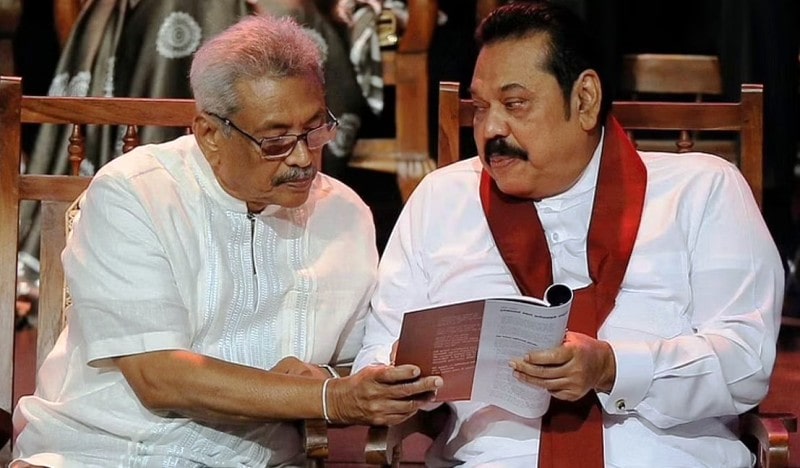 • Basil Rajapaksa (former minister of finance, former member of parliament)  • Dudley Rajapaksa (vice president of QA/RA/Technical Service at Berlin Heart GmbH) 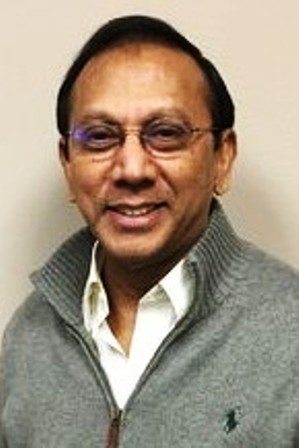 • Chandra Tudor Rajapaksa (politician) 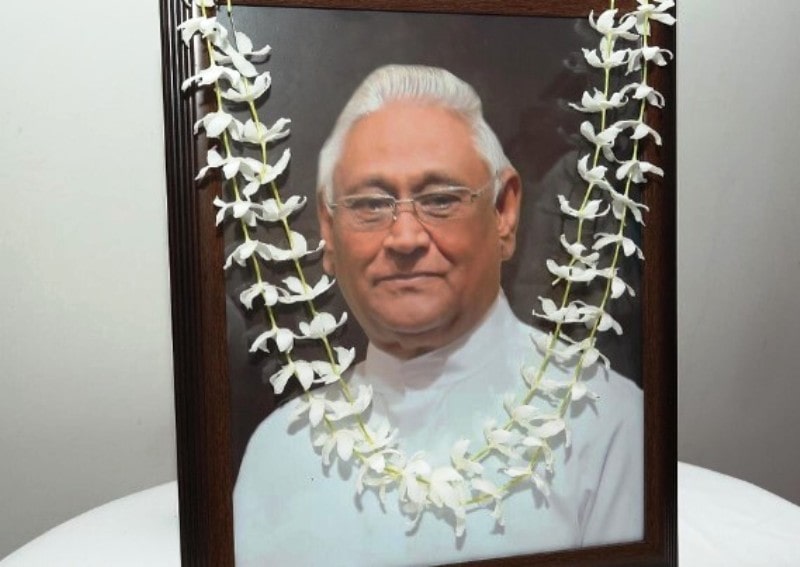 Sister(s)- 3 • Jayanthi Rajapaksa (former member of parliament, former deputy minister of water supply and drainage) • Preethi Rajapaksa (teacher) • Gandini Rajapaksa |
| Style Quotient | |
| Car Collection | He owns a vintage FIAT 124 Sports Coopé. |
| Money Factor | |
| Net Worth (as of 2015) | Net worth of the Rajapaksa family was approximately $18 billion (Rs 3.2 trillion).[37]Newsfirst.lk |
Some Lesser Known Facts About Mahinda Rajapaksa
- Mahinda Rajapaksa is a Sri Lankan politician of the Sri Lanka Podujana Peramuna (SLPP) and a lawyer. He has served as the President as well as the Prime Minister of Sri Lanka. He is the elder brother of the 8th President of Sri Lanka, Gotabaya Rajapaksa, who fled Sri Lanka amidst the Sri Lankan crisis in 2022.
- At the beginning of the 1960s, Mahinda Rajapaksa joined the University of Sri Jayewardenepura as an assistant librarian. At the university, he read several left-wing political pieces of literature and aligned himself with the leftist ideology.
- When Mahinda Rajapaksa was working as an assistant librarian, he joined the Ceylon Mercantile Union (CMU).
- In 1967, after Mahinda Rajapaksa became the branch secretary of the Ceylon Mercantile Union, he resigned as a librarian.
- After the death of his father in 1968, Mahinda Rajapaksa was offered his father’s post as a party organiser in the Sri Lanka Freedom Party (SLFP).
- In 1970, Mahinda Rajapaksa contested his first Sri Lankan general elections against the UNP leader Dr Ranjit Atapattu from the Beliatta constituency. Mahinda entered the Sri Lankan parliament after defeating Ranjit Atapattu by 6,626 votes.
- Mahinda Rajapaksa served as a member of the parliament from 1970 to 1977; however, despite winning the elections, he was not given a portfolio in the ruling government and remained a backbencher (an MP who does not hold any appointment in the governing party).
- Mahinda Rajapaksa once again contested the 1977 general elections in Sri Lanka from the Sri Lankan Freedom Party (SLFP) from the Beliatta constituency, where he lost to his UNP rival, Dr Ranjit Atapattu.
- In 1989, Mahinda Rajapaksa once again entered the Sri Lankan parliament from the Hambantota constituency after winning the general elections.
- After getting elected to the parliament, Mahinda Rajapaksa demanded an intervention of international organisations like the United Nations (UN) and Amnesty International in Sri Lanka to investigate and curb the alleged human rights violations being perpetrated by the UNP-led Sri Lankan government during the Janatha Vimukthi Peramunap (JVP) insurrection from 1987 to 1989. Talking about it, Mahinda said,
If the government is going to deny human rights, we should go not only to Geneva, but to any place in the world, or to hell if necessary, and act against the government sponsored human rights violations. The lamentation of this country’s innocents should be raised anywhere.”
- Mahinda Rajapaksa was given charge of the Ministry of Labour in 1994 after he won the Sri Lankan parliamentary elections. He remained the minister of labour till 1997.
- In 1994, Mahinda Rajapaksa appeared in a Sri Lankan film titled Nomiyena Minisun. The film was produced in the Sinhalese language.
- In 1997, following a cabinet reshuffle in Sri Lanka, Mahinda Rajapaksa left the Ministry of Labour and took charge of the Ministry of Fisheries and Aquatic Resources, where he remained till 2001.
- In 2001, despite winning the parliamentary election in Sri Lanka, Mahinda Rajapaksa could not get a ministry because his party lost to the United National Party (UNP).
- In 2004, Mahinda Rajapaksa contested and won the general elections in Sri Lanka, which took place after President Chandrika Kumaratunga dissolved the parliament. The Sri Lanka Freedom Party (SLFP) defeated the United National Party (UNP) in the elections and formed a government in Sri Lanka.
- After winning the 2004 general election in Sri Lanka, Mahinda Rajapaksa became the 13th Prime Minister of Sri Lanka and took the oath on 6 April 2004. Later, he was given the additional charge of the Ministry of Highways, Ports & Shipping.
- In 2005, the Sri Lanka Freedom Party (SLFP) chose Mahinda Rajapaksa as its Presidential candidate against Ranil Wickremesinghe, the United National Party’s candidate, for the 2005 Presidential elections in Sri Lanka.
- In 2005, Mahinda Rajapaksa became the President of Sri Lanka after he won the elections by defeating Ranil Wickremesinghe by a margin of 1,90,000 votes. Dissatisfied by the results of the polls, Ranil Wickremesinghe claimed that Mahinda was able to win the elections as the rebel faction Liberation Tigers of Tamil Eelam (LTTE) had issued an ultimatum in the LTTE-dominated parts of Sri Lanka in which it threatened the Tamil population of facing dire consequences had they voted. [38]The Guardian Talking about the elections, Ranil said,
It is a setback for the peace process as you have a very divided society. There is no Sri Lankan mandate but a divided one. I have demanded a recount of the vote in parts of the country where Tamil militants had prevented an estimated 500,000 voters from reaching polling stations, but the request was rejected by Sri Lanka’s elections commissioner.”
- After taking over the office of the President, Mahinda Rajapaksa kept the Ministry of Defence (MoD) and the Ministry of Finance (MoF) under his control. On 23 November 2005, he handed over the charge of the Ministry of Defence (MoD) to his younger brother Gotabaya Rajapaksa by appointing him the permanent defence secretary of Sri Lanka. Mahinda also extended the service period of Sarath Fonseka, a Sri Lankan Army commander. [39]BBC Reportedly, Mahinda brought Gotabaya and Sarath together to defeat the Liberation Tigers of Tamil Eelam (LTTE).
- In 2006, the Mahinda Rajapaksa-led Sri Lankan government scrapped the peace accord signed between the LTTE and the UNP-led Government of Sri Lanka in 2002. Reportedly, the ceasefire was revoked after the LTTE violated the peace accord by attacking and killing unarmed civilians and off-duty military personnel. In 2006, the LTTE attacked and captured a water reservoir named Mavil Aru after which they stopped the supply of water in the eastern provinces of Sri Lanka, affecting more than 15,000 Sri Lankan citizens.
- After revoking the peace accord, the Sri Lankan military, after receiving orders from the government, mounted a counter-offensive against the LTTE across Sri Lanka. Reportedly, the response of the Sri Lankan Armed Forces was very effective and the Sri Lankan Armed Forces managed to reclaim 95% of the territory under LTTE’s control within three years, and on 18 May 2009, the LTTE surrendered to the Sri Lankan government, marking the end of the Sri Lankan civil war. Mahinda, while giving a victory speech in the parliament, said,
We have liberated the whole country from LTTE’s terrorism. Our intention was to save the Tamil people from the cruel grip of the LTTE. We all must now live as equals in this free country. We must find a homegrown solution to this conflict. That solution should be acceptable to all the communities. We have to find a solution based on the philosophy of Buddhism.” [40]The Guardian
- In 2010, Mahinda Rajapaksa contested the Presidential election in Sri Lanka, where he secured a victory against his UNP rival Sarath Fonseka, the former Sri Lankan Army commander. According to the media, after Mahinda took oath as the President of Sri Lanka, he ordered a probe against Sarath Fonseka and had him arrested and jailed for two years.
- After beginning his second Presidential term, Mahinda initiated several infrastructural projects such as Colombo Lotus Tower, Magampura Mahinda Rajapaksa Port, the Colombo Harbour South Container Terminal, the Mattala Rajapaksa International Airport, the Colombo-Katunayake Expressway, and the Mahinda Rajapaksa International Cricket Stadium. Several media sources claimed that the implementation of such projects improved Sri Lanka’s Human Development Index (HDI) ranking; however, many sources also claimed that after the government implemented such projects, corruption in Sri Lanka increased manifolds and increased the cost of construction of the infrastructure as a result of which the Sri Lankan government had to take more loans from China, ultimately falling into its debt trap.
- In the 2015 Presidential elections in Sri Lanka, Mahinda Rajapaksa lost the polls to his rival Maithripala Yapa Sirisena, whose’s candidature was supported by Ranil Wickremesinghe. Reportedly, after Sirisena became the President of Sri Lanka, he wanted to make Mahinda Sri Lanka’s Prime Minister, but this could not happen as the Sri Lanka Freedom Party (SLFP) lost the 2015 general elections against the United National Party (UNP) following which Sirisena appointed Ranil Wickremesinghe, the leader of the UNP, as the Prime Minister of Sri Lanka.
- Mahinda Rajapaksa contested in the 2015 Sri Lankan general elections from the Kurunegala constituency and secured a victory against his UNP rival.
- In 2016, following a rift caused by some disagreements between Mahinda and the Sri Lanka Freedom Party’s senior leadership, Mahinda’s supporters quit SLFP and founded their political party named Sri Lanka Podujana Peramuna (SLPP) and appointed Mahinda as the party’s chairman. While talking about the party, a supporter of Mahinda said,
In the wake of the Central Bank bond scandal, the whole SLFP machinery is preoccupied with defending the Prime Minister. The sole aim of the SLFP today is to help the UNP to stay in power. It is the Sri Lanka Podujana Peramuna which will now truly embody the SLFP identity and character. He is our vision. He is the true leader in our hearts. We are his followers. These are his aspirations we are trying to fulfill. There are 36,000 villages in this country. All of them will rise in support of us.”
- Reportedly, after Mahinda Rajapaksa joined the Sri Lanka Podujana Peramuna (SLPP) as its chairman, he demanded a ban on the Chinese corporations that had invested a large amount of money in the Southern Economic Development Zone (SEDZ). In 2017, defying the orders of the Sri Lankan Supreme Court, Mahinda led the SLPP in an agitation against the Chinese during the inauguration ceremony of the Hambantota-China-Sri Lanka Industrial Zone, where the SLPP not only pelted stones at the then-Chinese Ambassador to Sri Lanka, Yi Xiangliang but also at the other guests present at the inaugural ceremony.
- In 2018, the Sri Lanka Podujana Peramuna (SLPP) defeated Ranil Wickremesinghe-led UNP in the local elections, where the UNP managed to secure only 34 seats out of 340 seats whereas the SLPP won the remaining seats. After defeating the UNP, the SLPP not only demanded the resignation of Ranil as Prime Minister of Sri Lanka but also demanded President Sirisena to dismiss the UNP-led government in the centre.
- After the defeat in the local elections, many UNP MPs demanded the resignation of Ranil following which the President of Sri Lanka Maithripala Sirisena asked him to resign. On 26 October 2018, the President removed Ranil from office and appointed Mahinda Rajapaksa as the Prime Minister. This act of the Sri Lankan President was termed “unlawful” and “undemocratic,” and it attracted criticism from the international community. [41]Scroll.in
- The events that unfolded on 26 October 2018 led to a constitutional crisis in Sri Lanka as Ranil had refused to resign from his post, claiming the move of the President to be unconstitutional, and the President, on the other hand, had appointed Mahinda Rajapaksa as the Prime Minister.
- In November 2018, Ranil Wickremesinghe appealed to the Supreme Court, and the apex court delivered its judgement in favour of Ranil in December 2018. The Supreme Court, through its judgement, asked the President to reinstate Ranil as the PM of Sri Lanka. [42]Reuters Talking about it, Ranil, in an interview, said,
It is a victory for Sri Lanka’s democratic institutions and the sovereignty of our citizens. I thank everyone who stood firm in defending the constitution and ensuring the triumph of democracy. I will work for a better economic situation, better standard of living for Sri Lankans after first working to normalize the country.”
- On 18 December 2018, Mahinda Rajapaksa became the leader of the opposition in the Sri Lankan parliament.
- After Gotabaya Rajapaksa won the 2019 Sri Lankan Presidential election, the Sri Lanka Podujana Peramuna (SLPP) won the 2020 parliamentary elections against the UNP after which Gotabaya Rajapaksa appointed Mahinda Rajapaksa as the Prime Minister of Sri Lanka.
- In 2020, after Gotabaya appointed Mahinda as the Prime Minister, Sri Lanka became the second country after Poland, where siblings held the top political posts in the country. [43]Fox News
- In 2022, when Mahinda Rajapaksa was serving as the Prime Minister of Sri Lanka, the country was declared a sovereign default due to its inability to pay debt worth $51 billion. The country fell into a debt trap because of the faulty policies implemented by the different Rajapaksa governments in Sri Lanka.
- On 9 May 2022, following the outrage of the public during the economic crisis in Sri Lanka, Mahinda Rajapaksa resigned as the Prime Minister of Sri Lanka.
- Several sources claim that Mahinda Rajapaksa puts a lot of faith in astrology. The sources also claim that before making a crucial decision, Mahinda always asks for advice from his trusted astrologers, and he is also known for wearing many astrological rings. Reportedly, one of the rings worn by him contains elephant hair in it, which, according to Mahinda, has brought good luck for him.
References/Sources:

